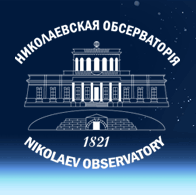|
2010-10-09 18:33:54
The Zonal Astrograph, one of three of the same type instruments, was made by Carl Zeiss company in 1925 for reobservations of the Astronomical Society's Catalogues (AGK). In 1929-1931, a zone near the celestial pole with declination between +70º and +90º was photographed in Pulkovo Observatory; and S. Belyavsky compiled the catalogue of 11322 stars. Before the Second World War, the Zonal Astrograph was used in Simeiz Observatory; and it was hardly damaged during the war. Virtually, only optics and some mechanical parts were not damaged. In December 1960, the Zonal Astrograph was delivered in Mykolayiv after restoration in opto-mechanical plants of St Petersburg. Main features of the telescope are the following: D=160 mm, F=2.04 m, FOV= 5ºx 5º. The effective diameter of the objective was diaphragmed to 120 mm under manufacture. Given features allowed us to determine positions of celestial objects brighter than 12m. Main Observational Campaigns of Photographic Astrometry
Determination of high-accuracy positions of the solar system bodies:
All observations, except positions of Jupiter, Saturn, and comets, were reduced in the system of ICRS by using positions of reference stars from Hipparcos and Tycho catalogues and proper motions from ACTRC catalogue. Creation of Stellar Catalogues for Special Purposes
The Multi-Channel Telescope
The CCD camera is able to operate in a stare mode with exposition time of 1 ms and any longer; and in a drift-scan mode as well.
The Observational Campaigns Carried out
1) Observations of selected minor planets are carried out to improve their orbit elements and to determine masses of asteroids which pertubate their orbit elements. Observations of near Earth objects are carried out as well. |
|||||||||||||||||||||||||||||||||||||||||||||||||||||||

Íàóêîâî-äîñë³äíèé ³íñòèòóò
Ìèêîëà¿âñüêà àñòðîíîì³÷íà îáñåðâàòîð³ÿ
̳í³ñòåðñòâî îñâ³òè ³ íàóêè
Ìèêîëà¿âñüêà àñòðîíîì³÷íà îáñåðâàòîð³ÿ
̳í³ñòåðñòâî îñâ³òè ³ íàóêè

 |
 |
 |